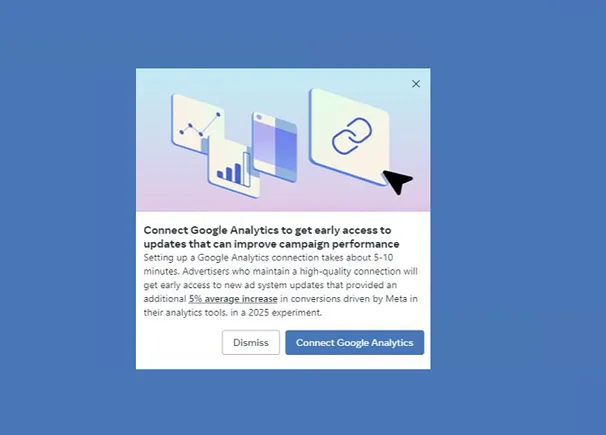“It would be better if everyone worked together as a system, with the aim for everybody to win.” — W. Edwards Deming, “The New Economics”
It’s easy to agree with this quote, right? And I know what you’re saying: “Wouldn’t it be nice if it were true!”
Well it can be. In fact, it’s what I strive to create everyday.
My name is Amri Johnson, CEO of Inclusion Wins — a global cooperative focused on people-related solutions for organizations of all sizes. I’m an inclusion strategist, executive advisor, social capitalist, epidemiologist, and entrepreneur who helps organizations of all shapes and sizes design and implement Inclusion Systems.
What’s an Inclusion System?
Let’s first look at what we mean by the word “inclusion.” Inclusion is defined as “Actions that create the conditions for any mixture of similar and different attributes to thrive and for an organization to be generative.”
Please note the use of the words “thrive” and “generative,” as those are always the intended goals of Inclusion Systems: for everyone to thrive — from employee to stockholder, from mailroom clerk to CEO — and for organizations to be positive, life-giving, cooperative, and connected — aka generative. Generative organizational cultures with Inclusion Systems create and invent opportunities for others while creating value for themselves.
Inclusion Systems are, therefore, the embodiment of Mr. Deming’s quote. Said in another way: “When inclusion wins, everyone wins.”
Now that we have the official definition of an Inclusion System, let’s flesh things out a bit more. The following are the Five Foundational Elements of an Inclusion System, along with a few questions CEOs can use to assess the prevalence of these elements within your organizations. Some may already have these foundational elements as part of your current DEI approach — if so, you’re well ahead of the game. If not, they can be used as a guide.
Element #1 – Accessible, Actionable, Sustainable: An Inclusion System assures that inclusion is integrated into an organizational culture in the following ways:
- Accessible means that an Inclusion System is for everyone in an organization, and everyone is invited to contribute to its design; be open and safely critical of it; or make a case for changing what it needs to do more of, differently, or stop doing. An Inclusion System invites everyone to contribute to its design and recognizes that those who initially engage in the formal design will be a fraction of the whole. An Inclusion System intentionally finds channels to move that fraction closer to ‘1’ or completeness.
- Actionable means that inclusion is unambiguously prioritized in the organization. While it has ever-emerging philosophies and approaches, the ongoing set of actions and behaviors are communicated with clear expectations of all organizational stakeholders without regard to power or position.
- Sustainable connotes that an Inclusion System is created to fulfill organizational purpose. An Inclusion System is a helping force for all stakeholders (i.e. employees, shareholders, suppliers, and customers/users of products and services) to thrive and advancing the organizational culture to be generative. Sustainability goes beyond traditional connotations of the term mainly focused on the natural environment. Climate action is in scope, but more important is sustaining and growing social capital to address complex social and business challenges.
Questions: To what extent are our DEI approaches broadly co-created and consistently assessed for whether they are meeting both the needs of all stakeholders and the organizational mission?
Element #2 – Interdependence: An Inclusion System acts to foster interdependence. It acts as a system in and of itself but can only operate interdependently engaged with other organizational systems. An Inclusion System functions as a system within a system.
Questions: Where in the organization is inclusion being considered in organizational strategy? How is inclusion being integrated into team engagement and performance metrics? What systems in your organizational design are explicitly considering inclusion in their operation?
Element #3 – Mindful Reflection: An Inclusion System reflects on itself constantly. In maintaining its insightfulness, it must be measured and challenged for integrity and viability. An Inclusion System uses the behavioral and social sciences as tools for measuring, evaluating, learning, and telling stories about the impact of its co-creations with other systems. Measures can vary. There can be measures of the inputs to evaluate the uptake and resonance. Most important, however, are the measures of the outcomes and impact.
Questions: How frequently do you engage with stakeholders as to how inclusion supports them individually, their teams, and the organization in pursuit of its purpose/mission?
Element #4 – Skilled Operators: An Inclusion System requires skilled system operators. There are many people in organizations that consider themselves practitioners. Some have adjacent skills that transcend traditional DEI experience. Others are passionate about the work based on their lived experiences. Skill levels will vary. Skilled operators help people to constantly build capabilities so that more skilled operators are available to the organization. To a lesser extent, Inclusion Systems require the rhetorically gifted to champion and communicate intentions, actions, and outcomes. Operator skill should outweigh rhetorical skills at least 2:1.
Questions: In what ways are you assuring that your practitioner community is growing its capability to make inclusion accessible, actionable, and sustainable? How are you actively working to build skills and abilities for emerging operators (e.g. ERG members, DEI council and committee members, team leaders)?
Element #5 – Adherence to Core Elements: The core elements of an emerging Inclusion System are like a mirror for the inputs selected. If any input of the system is found to be out of alignment with the core elements and doesn’t create the conditions for the above in the fulfillment of its mission, it should be discontinued.
Questions: What does your data communicate about the impact of your programmatic efforts? Are there regular conversations about how inclusion-oriented programming (explicitly stated to be intended for this purpose) or adjacent efforts (having elements that could be inclusion-oriented) is meeting or exceeding expectations or not? Is the sustainability of these efforts in consideration?
CEOs want to be asking each of these questions, as Inclusion System development requires clarity of the current state of an organization. All organizations have a positive core, and Inclusion System development seeks out this core while considering less desirable elements that might emerge while seeking it out.
Lastly, Inclusion System development always keeps the end goal in mind, always remaining grounded in its purpose and rooted in its foundational goal: for the organization to thrive, be generative, and work together to create extraordinary business outcomes.
In that system, everyone does win.
Written by Amri Johnson.
Have you read?
Your Team May be Healthy and Talented, but is It Right for Where You’re Going by Matt Hulett.
Despite What You May Think, The Leadership Hierarchy You Think You Want is Ineffective by Larry Yatch.
The Middle Ground Between Milton Friedman and ESG Standards by Lisa Gable.
Said Shiripour: Building An 8 Figure Business With The Vision Of Empowering Entrepreneurs .
Joe Soltis: Driven by Purpose – Growing and Nurturing a Purpose-Oriented Business.
Track Latest News Live on CEOWORLD magazine and get news updates from the United States and around the world.
The views expressed are those of the author and are not necessarily those of the CEOWORLD magazine.
Follow CEOWORLD magazine headlines on Google News, Twitter, and Facebook. For media queries, please contact:
info@ceoworld.biz








































































